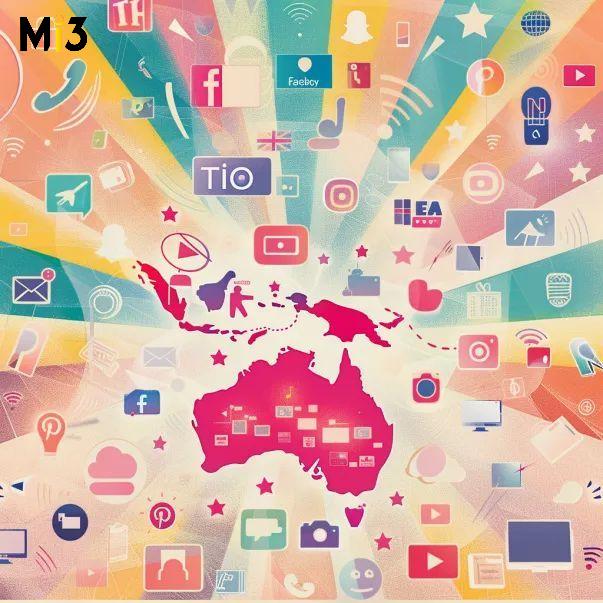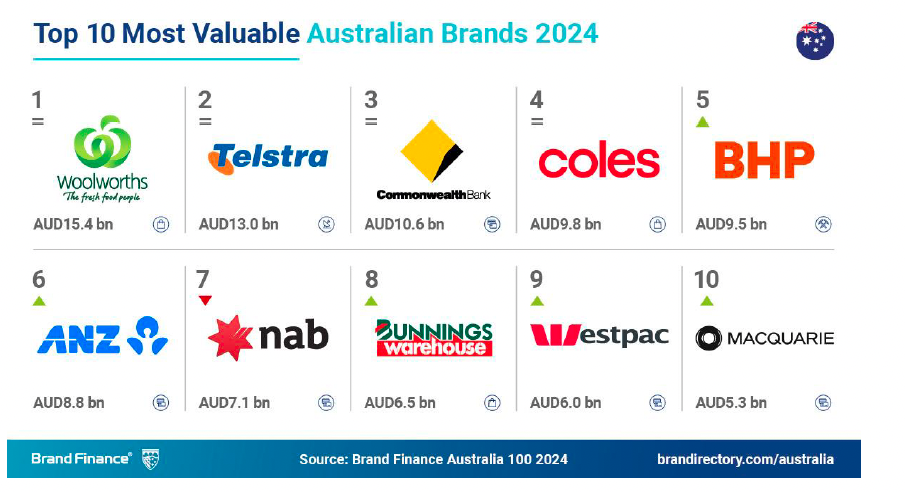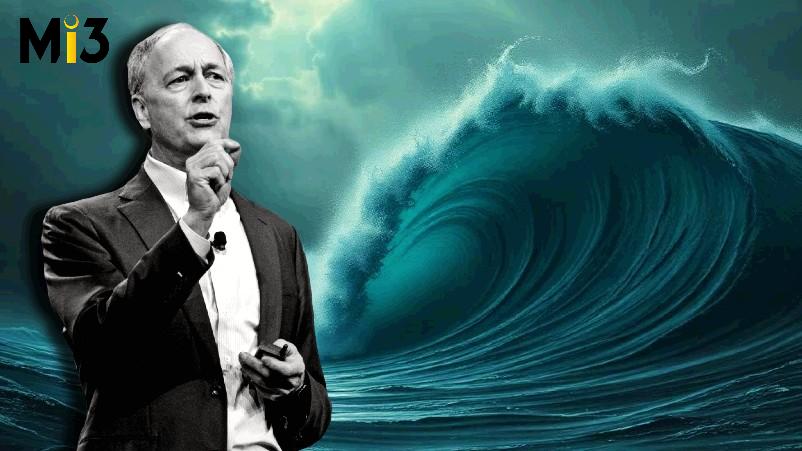Australia plays catch-up on ad emissions – but IAB chief claims late mover advantage ahead of local Ad Net Zero launch

What you need to know:
- Ad Net Zero and GARM have launched a Global Media Sustainability Framework that provides advertisers, publishers, media agencies and ad techs with standardised approach to measure carbon emission in the media supply chain, starting with digital, TV and outdoor channels.
- A client-led initiative, with the likes of Diageo, Unilever, Mars, P&G, Mastercard, and L’Oreal on its steer team, the framework calls for collective industry action for climate, and per Scope3 chief Brian O’Kelley, is “the most important piece of progress” on adland’s sustainability front to date.
- It comes as the Australian industry plays catch up with its UK, US, European and New Zealand peers – this market will be the last of that cohort to officially launch its own Ad Net Zero initiative. The local rollout is slated for October, with IAB Australia, the AANA and MFA doing the bulk of the heavy lifting.
- IAB’s Gai Le Roy says there’s solid buy-in across the market, with plans for early supporters to be named ahead of launch. Local steering committees will also be established to oversee five core pillars of the Ad Net Zero Action Plan, and a working group will be set into motion to review and adapt the new GARM framework for the Australian market.
- The UK is four years ahead, but IPA Media Media Climate Action Group chair and EssenceMediacom UK managing partner and head of sustainability, Pauline Robson, says it’s been hard to “bring together different holding groups, clients, and media partners to work together”. Initiatives like GARM, she hopes, will smooth that path.
- While Le Roy says Australia is not that far behind relative to the US, others are less forgiving. Former OMD, Ikon and Mindshare boss turned net zero consultant James Greet says the lax climate rhetoric in this market is no coincidence given what he describes as an “unhealthy” relationship between media owners and fossil fuels companies. He says that the commercial relationship between agencies and media owners has meant for a lack of leadership on the agency side as “no one wants to put their head above the parapet”.
- Finger pointing aside, the industry must now chose whether to get to grips with its collective carbon footprint before energy-hungry AI models take us to the point of no return.
Ad Net Zero and the World Economic Forum-backed Global Alliance for Responsible Media (GARM) last month published the first iteration of their Global Media Sustainability Framework, laying out a series of voluntary industry standards for measuring greenhouse gas emissions across digital, television, print, audio, outdoor and cinema.
Debuted at Cannes Lions, the framework follows a 12-month global engagement effort led by GARM – a cross-industry initiative launched by World Federation of Advertisers (WFA) five years ago to address the prevalence and monetisation (via advertising) of harmful content on digital media platforms.
Like GARM, the Sustainability Framework has the backing of some of the world’s most powerful advertisers, ad techs, publishers and agencies – Diageo, Unilever, Mars, P&G, Mastercard and L’Oreal all sit on the initiative’s steer team, and Google, Meta, and Amazon all took part in the working groups that saw to its making, along with the media arm’s of all six major agency networks.
Channel-specific frameworks and formulae will be published in stages, starting with TV, digital and OOH. Print, audio and cinema will follow in phase two, with GARM and Ad Net Zero to track uptake and publish initial results in the second quarter of 2025.
Locally, IAB Australia has greenlit the framework’s Australian adoption, and says it will work with other industry stakeholders to review the framework for rollout in this market. It’ll come in parallel with the long-awaited Ad Net Zero Australia launch, which four years after its establishment in the UK, is set to hit the local industry in the back end of this year.
United front
The GARM Sustainability Framework is effectively a push from the biggest advertisers in the world to align the ad industry’s global efforts to address the climate crisis – per Scope3 founder and CEO Brian O’Kelley “[they] want this problem solved, and [they] want to control how its solved”.
It means Scope3, which played a consultative role in the development of the new framework, will have to compete with other supply chain emissions ad techs on a more even playing field, but O’Kelley tells Mi3 it’s “the most important piece of progress” on the industry’s sustainability front to date.
“We’re going from kind of a crazy idea [of measuring carbon in the media supply chain] to a maturing category, and that means adoption is going to happen – every major marketer will have a sustainability platform.”
Per O’Kelley, that forces publishers and platforms to care – hence X announcing earlier this month that it would be rejoining GARM, after exiting following Elon Musk’s 2022 takeover. (But that reunion could be short-lived if Musk is serious about suing GARM members for an alleged advertising boycott of X and other conservative platforms.)
For those not taken by the climate cause, O’Kelley points to a secondary consequence of improving transparency in the media supply chain – performance. He has long advocated brands and publishers pare back their supply chains, ad tech partners and ditch junk inventory, claiming ad emissions can be halved within 12 months.
“What we’ve seen is that carbon drops dramatically and performance increases [via that approach]. If you can get better performance and lower carbon, it’s a no brainer.”
Likewise, chair of the Institute of Practitioners in Advertising’s (IPA) Media Climate Action Group in the UK, and EssenceMediacom UK managing partner and head of sustainability, Pauline Robson, says the GARM framework will make it easier for publishers to come to the table – they’ll no longer be “bombarded” with requests for different metrics.
“My sense is that we will start to see an acceleration of that data becoming available, because everyone is now clear on what they need to provide, or they will be once the framework is fully complete. That will start to create more transparency around where the emissions are coming from, which channels, which media vendors, whereabouts in the media value chain that will sit – and once we have that transparency of data, we can start to make changes.”
Ad Net Zero Australia
The new GARM framework arrives ahead of long-awaited rollout of Ad Net Zero into the local market – IAB Australia chief Gai Le Roy told Mi3 an official launch is slated for October. She’s hoping they’ll be able to name early supporters ahead of that.
It follows drawn out conversations between the IAB and its industry peers, the AANA and Media Federation of Australia (MFA), with the Ad Net Zero team to work out how the initiative could be rolled out in locally. It would more or less be a direct duplication of the global framework, though Le Roy states there is room to “tailor bits and pieces to this market” if required.
Le Roy, along with AANA chief Josh Faulks and the MFA’s Sophie Madden, have to-date been the driving forces behind local rollout, with early support from global platforms and agency groups who have already opted-in to the broader Ad Net Zero framework in other markets. “There’s a lot of global players in our industry who like that consistency across markets,” per Le Roy.
The three industry bodies are currently consulting with other industry bodies and their members to ensure there is a “really robust plan” and high engagement from industry come launch time.
That plan, as it stands, is to bring in a “local resource” with the right expertise to “drive” the Ad Net Zero initiative and establish local steering committees to oversee the five key pillars of the Ad Net Zero Action Plan (outlined below).
The IAB, AANA and MFA will run local education briefings and initiatives, including setting up a working group to review the GARM Sustainability Framework for adaption to the Australian market and energy specifications.
“It may not need any tailoring at all, it might just need just socialisation and education,” Le Roy notes.

The Ad Net Zero Action Plan
Pic: https://adnetzero.com/
UK lessons
With the UK, US, European Union, and locally New Zealand already setup with Ad Net Zero, there’s already a solid blueprint for success that the Australian industry can work off.
Robson, who has been involved with Ad Net Zero since it launched out of the UK at the end of 2020, says the initiative has been the starting point for lots of work across the industry, “particularly around media decarbonisation” – the GARM framework being the culmination of that effort.
As a founding member of the IPA’s Media Climate Action Group – founded in 2021 to address item 3 on Ad Net Zero’s action plan – she’s witnessed first-hand how the initiative has driven collective climate action across the UK industry. In the three years since launch, the Group has grown from six to 52 member media agencies.
It’s not to say that we should be anticipating change to come easily. Per Robson, the two years it took to get the GARM framework live “speaks to how challenging it’s been”.
“It’s no mean feat to bring together different holding groups, clients, and media partners to work together,” she says.
And to that end, Robson says that grassroots initiatives have also been critical to progress, making for a “bottom-up and top-down approach”.
But beyond the challenges of collaboration and consistency between agencies and publishers – which the new GARM framework should help to solve – Robson says it’s been difficult to broaden climate action outside of the advertising industry’s sustainability community bubble.
“It feels like very often, we are talking to the same people in the same spaces, and we need to widen the conversation and bring more people into it, particularly leadership in agencies,” she tells Mi3.
That’s seen in the findings of the IPA’s recent climate anxiety survey, which revealed that agency talent in the UK feel more demoralised and anxious about climate change compared to the general public.
“One in two people felt that their agency wasn’t taking enough action on climate,” says Robson. “When we looked at that from an industry perspective, 70 per cent of people felt the industry wasn’t doing enough.”
If nothing else, Robson says that the findings point to a potential talent issue if agency management fail to heed the concerns of more junior employees.
Better late than never?
It’s not unusual for the Australian market to follow from its northern hemisphere peers, and the Ad Net Zero initiative is no different. But on a matter of urgency like climate, there is a question of how long of a delay is too long – New Zealand got the jump on us in this case, and by more than a year.
Le Roy acknowledges that we’re a little further behind than usual, though relative to the US, from whom the Australian market would typically take its cues, suggests “a year is not too far behind for this sort of thing”. That might be true – though we’ll actually be lagging by 20 months come the official launch in October.
Still, Le Roy insists that the delay isn’t a reflection of the Australian advertising industry’s commitment to climate action.
“We knew this framework was coming. Sometimes it’s good just to watch what’s going on and then, you know, adopt some of the work that’s been done overseas,” she says. “A lot of our member organisations, they’re on the journey. It’s not like they haven’t been doing things.”
Now, Le Roy says that “one of the biggest benefits of having this common framework” from GARM will be in setting those minimum standards and consistent methodologies that will make it easier for the industry to measure and report greenhouse emissions – something they’ll need to get into the habit of quickly with mandated climate reporting just around the corner in this market.
Heads and parapets
Others are more skeptical of the Australian industry’s lack of momentum on the climate front, with industry collectives like Comms Declare expressing frustration over the lack of urgency.
A controversial partnership between Paramount ANZ and Australian Gas Networks drew greenwashing allegations from climate activists, raising concerns that neither the government’s competition watchdog, the ACCC, nor the AANA’s Ad Standards were equipped to deal with more nuanced instances of greenwashing.
All of this, according to consultant James Greet, is symptomatic of a “total lack of leadership within our industry here to acknowledge that there is a major, major problem called the climate crisis that is an existential threat to every citizen and every country around the world”.
Greet, who is a former agency boss with Mindshare, Ikon, OMD and senior exec at Cummins & Partners and Hero, now runs a specialist net zero advisory called The Payback Project.
The problem, he says, is not awareness, but a fear of rocking the boat in a market that Greet argues is still influenced significantly by fossil fuels. Nor does it help that rates of climate scepticism sit uncharacteristically high in our population – only 60 per cent believe that climate disruption is human-caused, according to new research from French polling company Elabe. That puts us in the bottom five of the 26 nations included in the study, in company with the UAE, Ivory Coast, Saudi Arabia and Nigeria.
“No one wants to put their head above the parapet, and I genuinely think that’s because, by and large, we are a petro state,” suggests Greet, who claims the lack of climate leadership on the agency sector’s part comes down to “an unhealthy relationship” between some of Australia’s most powerful media companies and fossil fuels businesses.
As “there’s a commercial relationship between media owners and big media agencies”, he claims “it’s not in anyone’s commercial interest to do anything about it and take a stand on [climate]”. And he says that the media’s influence on the climate issue has spilled into the ad industry’s historically soft rhetoric when it comes to taking action.
It is also true that in a squeezed economy, it’s hard for many agencies to turn away from the revenue boost that fossil fuel businesses can offer.
But even if the local climate debate is more complicated, Greet is optimistic that once the Ad Net Zero and GARM initiatives land, we have an opportunity to turn things around quickly. That’s because the pressure now coming from clients.
“The only way, to be honest, that you’re going to get any real sort of major step change here in Australia, is advertisers and marketers understanding that they contribute and that they can reduce [their impact]. Because at the end of the day, they’re the source of the money, and agencies and therefore media owners will react to what clients ask of them.”
The AI race
The challenge in the short term, according to Greet, will be in ensuring that marketers are cognisant of how their media plans contribute to greenhouse emissions.
In the digital age, he argues that “many marketers have become even further removed from actually understanding how media works” and that’s “why they don’t understand how much impact that they’re having”.
The extent of that impact, on a global basis, is significant. According to a 2019 study from French climate think tank The Shift Project, the digital ecosystem accounted for 3.7 per cent of all greenhouse emissions – compared to the 2.5 per cent owing to the aviation industry.
Per Robson, advertising itself is only “a small part of that”, but it “points to the significance of the ecosystem that we are investing in, that our clients are supporting through their budget”. And by now, the trajectory of digital ad market would likely put that figure much further ahead. We Are Social’s Digital 2024 report shows that global digital ad spend almost doubled from US$395.2bn in 2019 to US$719.2bn by 2023, and targeting and measurement technologies are at the same time only getting more expansive.
The age of artificial intelligence poses an even more acute threat to climate – Google this month confirmed that its AI push has seen its greenhouse gas emissions soar 48 per cent in the last five years. The tech giant is still targeting net zero ambitions by 2030 but pointed to “significant uncertainty” of “the future impacts of AI” which it said were “difficult and complex to predict”.
“If [marketers are] not already on the road to trying to decarbonise or reduce their emissions, then what’s going to happen in the interim is that those emissions are just going to increase out of sight because of the application of AI,” says Greet.
“So, you can imagine what’s happening as everyone jumps on the AI wagon, from a marketing and a communications point of view,” he adds. “It’s increasing [carbon emissions] at a rate faster than renewables coming online can even offset, so every day that goes by, the demands of agencies to do more [is] absolutely increasing their footprint.”
But Greet says its not too late for the Australian ad market to get a handle on its side of the crisis.
“There is an issue, and we have a role to play in fixing it. If you haven’t done that, but in the last four weeks, you’ve got on a plane and gone to Cannes, then you need to take a good look at yourself and actually do something.”





